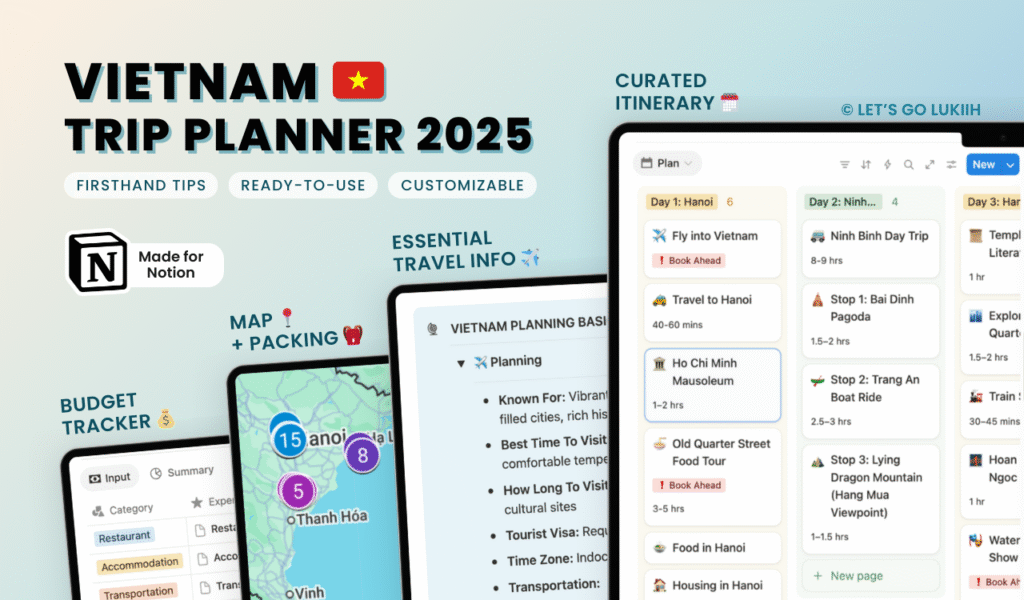Rankings l Trip Planner
 The view from Lying Dragon Mountain in Ninh Binh.
The view from Lying Dragon Mountain in Ninh Binh.
🗓️ Itinerary
🏆 Experience Rankings
Here are my ranked experiences for Vietnam. Learn how I rate experiences.
| Experience | Location | Overall Rating |
|---|
| 1 | 🛵 Ha Giang Loop | Ha Giang | 8.7 |
| 2 | 🧗♂️ Deep Water Solo in Lan Ha Bay | Halong Bay | 7.7 |
| 3 | 🍜 Old Quarter Street Food Tour 🎟️ | Hanoi | 7.5 |
| 4 | 🐉 Ninh Binh Day Trip 🎟️ | Ninh Binh | 7.1 |
| 5 | ✂️ Hoi An Tailoring Experience | Hoi An | 7.1 |
| 6 | 🛕 Linh Ung Pagoda & Lady Buddha 🎟️ | Da Nang | 6.9 |
| 7 | 🏞️Marble Mountain 🎟️ | Da Nang | 6.6 |
| 8 | 🏛️ Ho Chi Minh Mausoleum | Hanoi | 6.2 |
| 9 | 🎍 Bamboo Circus 🎟️ | Hoi An | 6.0 |
| 10 | 👩🍳 Cooking Class 🎟️ | Hoi An | 5.9 |
| 11 | 🛶 Basket Boat Ride | Hoi An | 5.7 |
| 12 | 🎭 Water Puppet Show | Hanoi | 5.6 |
| 13 | 🐢 Hoan Kiem Lake | Hanoi | 5.3 |
| 14 | 🥬 Tra Que Village | Hoi An | 5.1 |
| 15 | 📜 Temple of Literature | Hanoi | 4.4 |
| 16 | 🌉 Japanese-Covered Bridge | Hoi An | 4.0 |
| 17 | 🏖️ An Bang Beach | Hoi An | 3.9 |
Learn how Lukiih’s Rating is calculated here
🗓️ 2025 Trip Planner
Make planning easier with my flexible, research-backed travel planner—shaped by real experience. It has:
✈️ Up-to-date 2025 travel info
🗓️ A well-curated itinerary
💡 Practical, firsthand insights & tips
💰 A simple budget tracker
🎒 A starter packing list
🎯 Fully customizable sections
My trip planners are built on Notion, which I use for all my planning. I genuinely love this tool and creating an account is free.
Lists by Lukiih is a small site I fund myself. Downloading my trip planner is the best way to support me and keep it running—thanks!
 Vietnam trip planner preview
Vietnam trip planner preview



